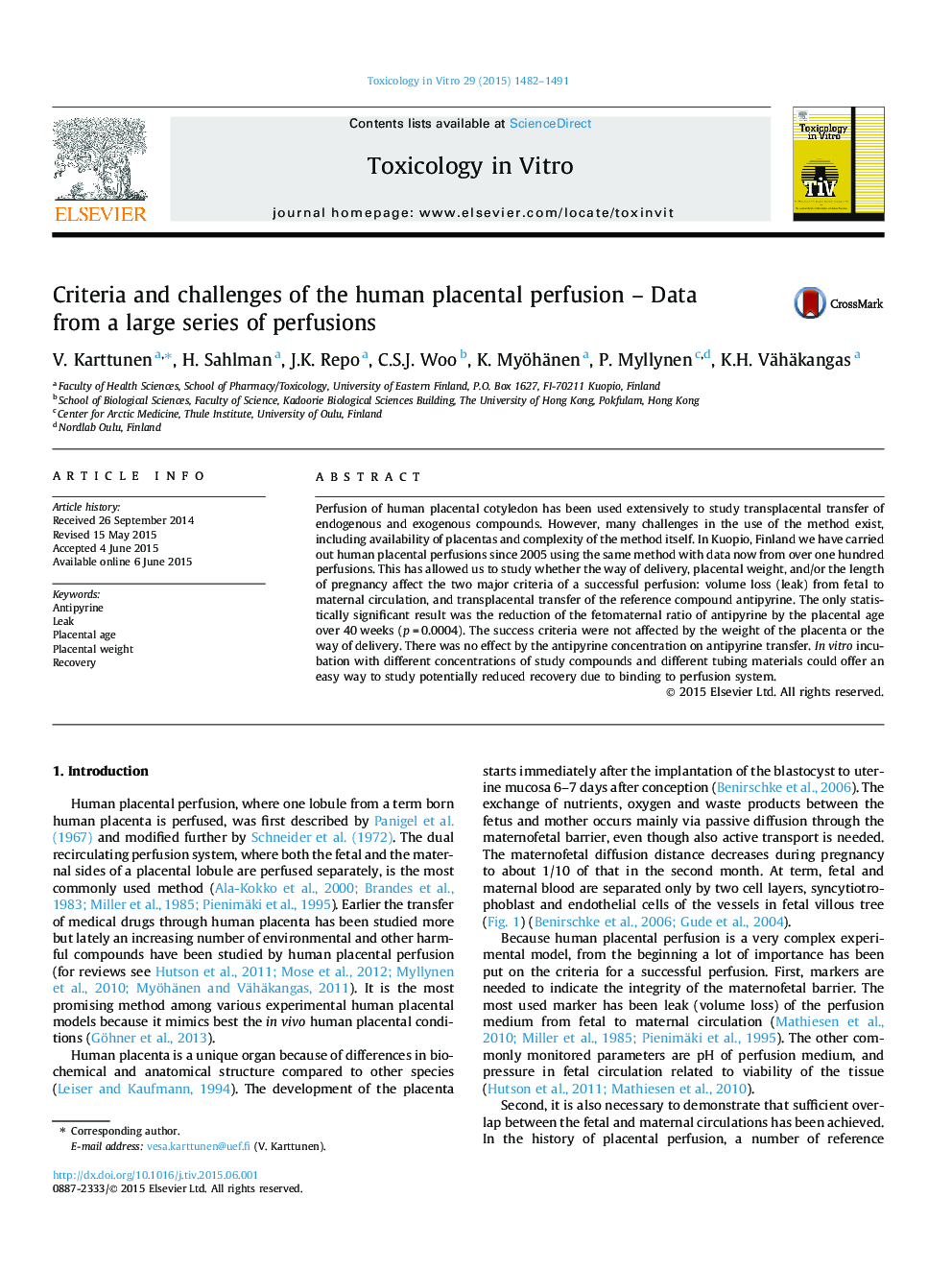| کد مقاله | کد نشریه | سال انتشار | مقاله انگلیسی | نسخه تمام متن |
|---|---|---|---|---|
| 5861458 | 1133760 | 2015 | 10 صفحه PDF | دانلود رایگان |

- Details of human placental perfusion method used in Kuopio, Finland are described.
- Determinants of success were searched for in a large series of perfusions.
- Placental characteristics were compared with success criteria of perfusions.
- Transplacental transfer of antipyrine correlates negatively with pregnancy weeks.
- Antipyrine transfer is independent of concentration.
Perfusion of human placental cotyledon has been used extensively to study transplacental transfer of endogenous and exogenous compounds. However, many challenges in the use of the method exist, including availability of placentas and complexity of the method itself. In Kuopio, Finland we have carried out human placental perfusions since 2005 using the same method with data now from over one hundred perfusions. This has allowed us to study whether the way of delivery, placental weight, and/or the length of pregnancy affect the two major criteria of a successful perfusion: volume loss (leak) from fetal to maternal circulation, and transplacental transfer of the reference compound antipyrine. The only statistically significant result was the reduction of the fetomaternal ratio of antipyrine by the placental age over 40 weeks (p = 0.0004). The success criteria were not affected by the weight of the placenta or the way of delivery. There was no effect by the antipyrine concentration on antipyrine transfer. In vitro incubation with different concentrations of study compounds and different tubing materials could offer an easy way to study potentially reduced recovery due to binding to perfusion system.
Journal: Toxicology in Vitro - Volume 29, Issue 7, October 2015, Pages 1482-1491